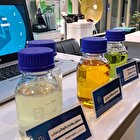Scientists Develop First-Ever Touchable 3D Holograms

Dr. Elodie Bouzbib from the Public University of Navarra (UPNA), together with Iosune Sarasate, Unai Fernández, Manuel López-Amo, Iván Fernández, Iñigo Ezcurdia, and Asier Marzo, has achieved a breakthrough in three-dimensional display technology. The team successfully demonstrated mid-air 3D graphics that can be manipulated using hand gestures. Both Asier Marzo and Iñigo Ezcurdia are members of the Institute of Smart Cities, the SciTechDaily reported.
‘What we see in films and call holograms are typically volumetric displays,’ explains Bouzbib, the lead author of the study. ‘These are graphics that appear in mid-air and can be viewed from various angles without the need for wearing virtual reality glasses. They are called true-3D graphics.’ She adds that ‘they are particularly interesting as they allow for the “come-and-interact” paradigm, meaning that the users simply approach a device and start using it.’
The team notes that ‘commercial prototypes of volumetric displays already exist, such as those from Voxon Photonics or Brightvox Inc., but none allow for direct interaction with the holograms.’ Lead researcher Asier Marzo explains that direct interaction involves ‘being able to insert our hands to grab and drag virtual objects.’ He continues: ‘We are used to direct interaction with our phones, where we tap a button or drag a document directly with our finger on the screen – it is natural and intuitive for humans. This project enables us to use this natural interaction with 3D graphics to leverage our innate abilities of 3D vision and manipulation.’
Volumetric displays have a fast oscillating sheet called a diffuser, images are projected synchronously at high speed (2,880 images per second). Thanks to the persistence of vision, the images projected onto the diffuser at different heights are perceived as a complete volume.
“The problem,” notes the research team, “is that the diffuser is usually rigid, and if it comes into contact with our hand while oscillating, it may break or cause injury.” To address this, the team has replaced the rigid diffuser with an elastic one after testing different materials for their optical and mechanical properties. The challenge is that “elastic materials deform and require image correction,” adds Bouzbib.
This innovation enables new ways to interact with 3D graphics, allowing users to grasp and manipulate virtual objects naturally. “For example, grasping a cube between the index finger and thumb to move and rotate it, or simulating walking legs on a surface using the index and ring fingers,” they illustrate.
“Displays such as screens and mobile devices are present in our lives for working, learning, or entertainment. Having three-dimensional graphics that can be directly manipulated has applications in education — for instance, visualising and assembling the parts of an engine. Moreover, multiple users can interact collaboratively without the need for virtual reality headsets. These displays could be particularly useful in museums, for example, where visitors can simply approach and interact with the content,” explains the research team.
4155/v





















